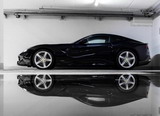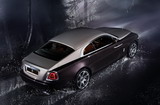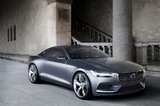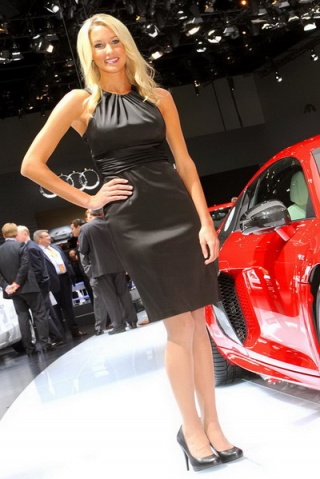HARMAN’S AUDIO SPECIALISTS: “GOLDEN EARS” AND FAVOURITE SONGS FOR TUNING CAR AUDIO
HARMAN’s APPROACH TO CREATING AUDIO SYSTEMS FOR AUTOMOTIVE USE
In-depth interview with HARMAN’s chief engineer of acoustics, Arndt Hensgens; as he provides a background on the complex, challenging task of creating and tuning an OEM audio system for automotive use.
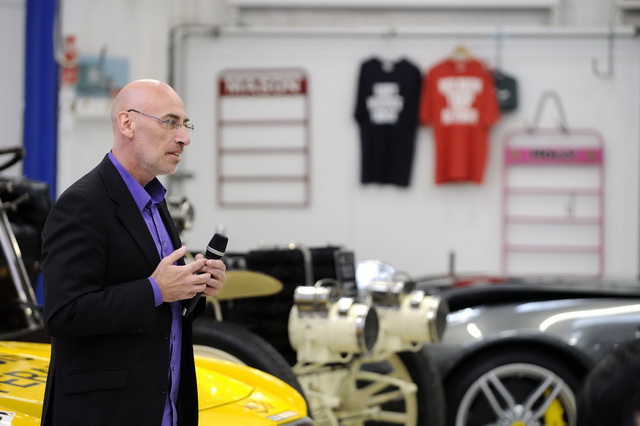
The car is one of the most challenging environments for achieving great audio
“There is a huge range of materials – plastic, cloth, leather and glass – which all absorb and reflect sound waves at different rates and every model has a different shape cabin, adding yet more complexity."
Golden Ears
“Car audio is a long and delicate process that combines technology but most importantly, the human ear. Each model-specific car audio system is meticulously tested by HARMAN’s trained team of audio specialists, nicknamed ‘Golden Ears’ for our abilities to hear subtle audio differences.”
HARMAN ‘Golden Ears’ – Top 5 songs for tuning car audio
1) Cassandra Wilson – Fragile
2) Juri Horning Trio – Walking On The Moon
3) Eva Cassidy – Fields of Gold
4) Allan Taylor – Colour to the Moon
5) Mussorgsky – Pictures at an Exhibition, Fritz Reiner Chicago Symphony Orchestra

Road Testing
“We use the car on tracks and roads of varying surfaces. The speed, road surface, number of passengers, the roof being up or down, even if the car is petrol or diesel: all elements affecting the audio. We also consider the type of music a person buying that particular car would listen to. Only when we’re happy that the audio is at its finest will the system be signed off for production."
Testing your own audio: “At HARMAN There are four key ‘tests’ to assess the audio experience that can make the different between having an exhilarating or exhausting in-car experience,” says HARMAN’s chief engineer of acoustics Arndt Hensgens.
Before you begin:
- Setting-up the controls- make sure that all the audio controls (bass, treble, balance, fade) are set to ‘0’ or normal (setting to ‘0’ ensures the most accurate music reproduction from the system)
- Playing the audio – play the tracks from your smartphone or other device, try to use high quality sources
- Create your playlist– playing short 20-30 second segments of several different tracks, spanning genres, will show the system’s capabilities for handling a variety of music styles

Process:
1. Bass Response – Power
Listen for the presence, balance and extension of low frequencies
- The listening experience is not only heard, it’s felt
- The bass should be punchy and tight so that each note is distinctly present and physically moving
- The low frequencies should be balanced with good, deep bass extension to facilitate a smooth and natural response
2. Spectral Uniformity
Listen for the balance of frequencies (bass, midrange, treble)
- Each spectral region (bass, midrange and treble) should be distinct and balanced
- The bass, such as bass drum and bass guitar, should transition smoothly into the midrange, which includes vocals, piano, electric and acoustic guitar, to give a sense of warmth and intimacy
- The high frequency should complement the midrange providing accurate detail and clarity without a sense of harshness or irritation.

3. Spatial Imaging
Listen for the perceived location of instruments
- The listening experience in a car should be comparable to attending a concert, sitting towards the right of centre stage
- The instruments should appear naturally separated and accurately spread throughout the dash, the driver’s equivalent of the stage
- It should have good width, extending from pillar to pillar with appropriate height and lifelike depth
- The main vocal should be located towards the centre of the dash (stage)
4. Dynamic Capability
Listen for performance at various volume steps
- The system should be balanced and pleasing at each volume step
- Even at low volumes, the bass should be present and balanced with the midrange and treble continuing to demonstrate ample clarity and detail
- At high volumes, the bass should feel increasingly powerful and balanced
- The intimacy and clarity of the midrange and high frequencies are accentuated without a sense of fatigue.
Arndt Hensgens goes on: “Audio is a very subjective and visceral experience. However, it can be difficult to describe a powerful listening experience. There are some key descriptors that we find useful when talking about premium in-car audio.”

Vocals/instruments:
- Deep
- Rich
- Nuanced
- Defined separation
Should not be:
- Dark
- Muddy
- Honky
- Hollow
- Dull
Spaciousness:
- Wide
- Stable
- Panoramic
- Seamless
Should not be:
- Unnatural
- Closed stage
- Mono sounding
- Flat
High volume:
- Crisp
- Clear
- Powerful
- Pleasing ambiance
Should not be:
- Harsh
- Bass heavy
- Honkie
- Uncomfortable
- Fatiguing
- Boomy
- Loose
Noise:
- Serene
- Quiet
- Unobtrusive
- Tranquil
Should not be:
- Whirring
- Static
- Buzzy

HARMAN automotive audio brands: Bang & Olufsen, Bowers & Wilkins, Harman Kardon, Infinity, Lexicon, Mark Levinson, Revel
HARMAN audio customers include: Audi, BMW, Jeep, Lexus, Maserati, Mini and Volvo, amongst others.
